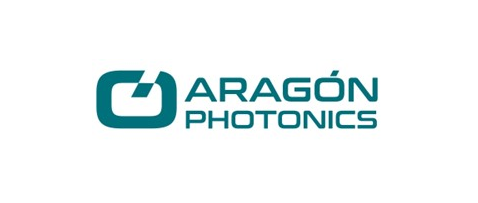

Security DAS Solution
Aragon Photonics' Distributed Acoustic Sensing (DAS) solution integrates with RSA for enhanced perimeter and border security, enabling real-time threat detection and monitoring. The combination of DAS and RSA ensures secure data transmission and authentication for more reliable and robust security systems.
Main Features:
- Real-time Threat Detection: Monitors and identifies potential intrusions or disturbances instantly.
- Secure Data Transmission: RSA integration ensures encrypted communication between devices and control centers.
- Scalability: Can be deployed over extensive borders or infrastructure networks.
- Low False Alarm Rate: Advanced signal processing algorithms to minimize false positives.
- Seamless Integration: Compatible with existing security and monitoring systems for a smooth upgrade.
- Non-intrusive: Fiber optic cables can be buried or attached to existing infrastructure without disrupting the environment.
- Cost-Effective: Utilizing fiber optics reduces the need for numerous standalone sensors or manpower.
Jump to
Industry
- Airports
- Energy Utilities
- Seaports
- Gaming
- Manufacturing Wholesale
- Data Centers
- Government
- Banking
- Cities
- Corporate Campuses
- Education
- Financial Institutions
- Healthcare
- Public Safety
- Retail
- Sports Entertainment
- Transit
Availability
- Americas
- Asia Pacific
- Australia And New Zealand
- Europe
- Middle East And Africa
Product line
- Security Center
Security DAS Solution Overview
Aragon Photonics' Distributed Acoustic Sensing (DAS) solution integrates with RSA for enhanced perimeter and border security, enabling real-time threat detection and monitoring. The combination of DAS and RSA ensures secure data transmission and authentication for more reliable and robust security systems.
Main Features:
- Real-time Threat Detection: Monitors and identifies potential intrusions or disturbances instantly.
- Secure Data Transmission: RSA integration ensures encrypted communication between devices and control centers.
- Scalability: Can be deployed over extensive borders or infrastructure networks.
- Low False Alarm Rate: Advanced signal processing algorithms to minimize false positives.
- Seamless Integration: Compatible with existing security and monitoring systems for a smooth upgrade.
- Non-intrusive: Fiber optic cables can be buried or attached to existing infrastructure without disrupting the environment.
- Cost-Effective: Utilizing fiber optics reduces the need for numerous standalone sensors or manpower.
Key Market Applications
Critical Infrastructure Protection:
In critical infrastructure sectors such as power plants, water treatment facilities, and oil and gas pipelines, unauthorized access and security breaches pose significant risks. Aragon Photonics’ RSA-integrated DAS solution provides continuous real-time monitoring of perimeters, ensuring that any disturbance or intrusion is instantly detected and reported. This enhances situational awareness and minimizes downtime or damage, offering improved security and peace of mind for asset protection.
Perimeter Security for Factories:
Factories and industrial facilities need to protect their premises from unauthorized access, theft, or sabotage. Traditional perimeter security systems can be insufficient for monitoring large areas or detecting threats accurately. Aragon Photonics' DAS solution, integrated with RSA, provides continuous real-time monitoring of the entire perimeter, detecting any disturbances or intrusion attempts. The main benefit is the ability to reliably secure the facility, reducing the risk of losses and enhancing operational safety with advanced perimeter protection.
Border Security:
National borders require constant surveillance to prevent illegal crossings and maintain security. Traditional monitoring systems are often limited in scope and can be vulnerable to tampering. The RSA-integrated DAS solution ensures real-time, wide-area detection across extensive border regions with secure, encrypted data transmission. The main benefit is the ability to detect and respond quickly to potential threats, maintaining national security with robust, scalable surveillance.
Features & Benefits
Features:
- Real-Time Threat Detection: The DAS solution, integrated with RSA and compatible with Security Center, continuously monitors for vibrations and disturbances along the perimeter. The system can instantly detect potential intrusions, such as human movement or vehicle traffic, and alert security personnel in real-time. This feature is critical for ensuring fast responses and minimizing risk.
- Advanced Signal Differentiation: Using sophisticated algorithms, the DAS system can differentiate between environmental factors (e.g., wind, animals) and genuine security threats. This results in a low rate of false alarms, improving the accuracy and reliability of the security system while ensuring only actionable alerts are generated.
- Encrypted Data Transmission: Through RSA integration, all data collected by the DAS system is encrypted and securely transmitted to the Security Center. This ensures that sensitive information, such as intrusion detection data, is protected from interception or tampering.
- Scalable Monitoring: The DAS solution is highly scalable, allowing it to cover vast perimeters such as factories, industrial sites, or national borders. Whether monitoring small areas or large, extended regions, the system adapts to various security needs, making it suitable for both small businesses and large enterprises.
- Seamless Integration with Existing Systems: The DAS solution integrates effortlessly with Security Center, allowing users to incorporate it into their existing security architecture without major changes. This feature minimizes deployment complexity and makes upgrades or expansion straightforward.
Benefits:
- Enhanced Security and Fast Response: End users benefit from real-time monitoring and threat detection, allowing security teams to respond instantly to potential intrusions. This minimizes the risk of breaches and reduces response times to incidents, which is essential for maintaining the integrity of sensitive or high-risk areas.
- Reduced False Alarms: The advanced signal differentiation ensures that security personnel only receive alerts for genuine threats. This reduces unnecessary distractions caused by false alarms, increasing the efficiency and effectiveness of the security team.
- Data Security and Privacy: RSA’s encryption ensures that sensitive security data is transmitted securely, giving end users peace of mind that their information is protected from external attacks or unauthorized access. This is especially critical in sectors that handle confidential data or high-value assets.
- Cost-Effective Scalability: The ability to scale the monitoring system across large areas without requiring significant infrastructure investment makes it cost-effective for companies. This allows organizations to expand their security coverage as needed without incurring prohibitive costs.
- Easy Integration and Flexibility: The seamless compatibility with Security Center means that end users can integrate the DAS system into their existing operations without the need for expensive or disruptive changes. This makes it easy for companies to upgrade their security systems or expand coverage, providing flexibility as their security needs evolve.
Solution Architecture
1. Fiber optic infrastructure
- The core of the system is the fiber optic cable, which is installed along the perimeter to detect vibrations and acoustic signals. This cable acts as a distributed sensor capable of detecting and localizing events such as movement, cutting, or intrusion attempts.
- The fiber itself is passive, requiring no power, and its sensitivity allows for real-time monitoring over long distances. This makes it an ideal solution for extensive perimeter applications, like borders or large facilities.
2. Interrogator (Optical Interrogation Unit)
- The interrogator is the active component that continuously monitors the fiber and transmits laser pulses through it. As these pulses travel along the fiber, they interact with vibrations or disturbances, causing slight changes in the light's backscatter signal.
- The interrogator measures these backscatter signals and converts them into data, which represents the location and nature of the disturbance. It functions as the system's "ears," translating raw acoustic and vibration data into meaningful signals for further analysis.
3. Pattern Analysis (Signal Processing and Machine Learning Algorithms)
- Once the interrogator captures the raw data, it is processed by a sophisticated pattern analysis system. This component employs signal processing techniques and machine learning algorithms to interpret the detected vibrations.
- The system classifies events by filtering out background noise, such as weather conditions or harmless environmental sounds, and identifying potential threats like human movement or vehicle intrusion. It is trained to recognize specific patterns of behavior associated with different types of threats, ensuring precise detection while minimizing false alarms.
4. User Interface (Alerting and Monitoring Platform)
- The final layer is the user interface, which allows operators to interact with the system. This interface provides real-time data visualization, such as live maps of the perimeter showing the exact location of disturbances, and detailed logs of detected events.
- Alerts generated by the pattern analysis system are displayed on the interface and can be sent via multiple channels (e.g., SMS, email). Operators can also configure system settings, review event history, and integrate the platform with existing security infrastructure.
Integration and Flow:
- The fiber optic cable continuously monitors the perimeter for any disturbances.
- The interrogator converts these disturbances into data using backscatter analysis.
- This data is processed by the pattern analysis system, which filters out noise and classifies potential threats.
- The user interface displays relevant alerts and allows operators to take appropriate action in response to any detected threats.
This multi-layered architecture ensures a robust, efficient, and scalable solution for perimeter security, providing accurate detection and minimizing false alarms.
